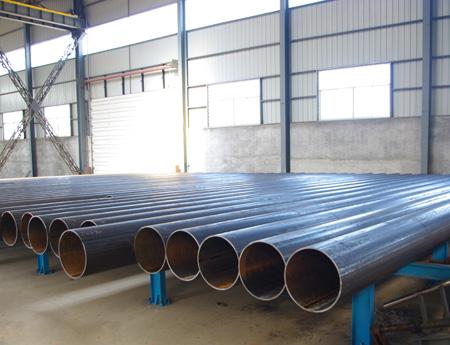
High Frequency Welded (HFW) Pipe
High-frequency welding is a kind of induction welding (or pressure contact welding). It does not require welding seam fillers, no welding spatter, narrow welding heat affected zone, beautiful welding shape and good welding mechanical properties. It is widely used in steel pipe production.
In welding, equipment is used to convert low power into high frequency power to complete the melting and welding process of solid metal. In high-frequency welding, resistance and heating of pressure rolls and tube blanks. Therefore, in order to ensure welding efficiency, it is necessary to control the interaction of the coil, impedance and rolling mill to optimize the welding process and ensure that the power consumption during the welding process is within a reasonable range. This is the problem that must be paid attention to in high-frequency welding technology.

Analysis of the principle of high frequency welding:
High-frequency welding technology uses the change of current frequency to produce skin effect and proximity effect on metal, thereby causing the metal to melt and complete the welding. Therefore, controlling its current is the most important technical parameter. The above analysis is high frequency welded pipe. The main technical parameters that need to be controlled in this process and their technical characteristics indicate that to reduce energy consumption, impedance, frequency and induction coils must be fully adjusted. Used to ensure welding quality.
There are four types of high-frequency welded pipes:
1. Welded steel pipes used for low pressure fluid delivery are also called ordinary welded pipes, usually called clarinets.
2. Galvanized welded steel pipe used for low pressure fluid transportation is also called galvanized welded steel pipe, commonly known as white pipe
3. Ordinary carbon steel wire casing is a steel pipe used to protect wires in electrical installation projects such as industry, civil construction, and mechanical equipment installation.
4. Straight seam electric welded steel pipe refers to a steel pipe whose weld seam is parallel to the longitudinal direction of the steel pipe.
Steel pipes are usually divided into two categories, one is welded steel pipe and the other is seamless steel pipe. Welded steel pipes are also called welded pipes. They are steel pipes made of steel or strip steel after crimping. Welded pipe is divided into: straight seam welded pipe and spiral welded pipe. of course! The surface quality and dimensional tolerances of welded pipes produced by different materials and processes are different.
What is the difference between ERW and HFW steel pipes?
ERW steel pipe includes HFW steel pipe:
ERW is the general term for electric resistance welded steel pipe. It can be divided into two types: alternating current welding (AC) and direct current welding (DC). According to the different frequency, AC welding can be divided into low frequency welding, intermediate frequency welding, ultra high frequency welding and high frequency welding. High frequency welding (HFW) is mainly used for ordinary or thin-walled steel pipes. It includes contact welding and induction welding. DC welding is usually used for small diameter steel pipes. Generally, HFW is one of ERW production methods, which uses high-frequency welding technology. Therefore, ERW steel pipe includes HFW steel pipe.


